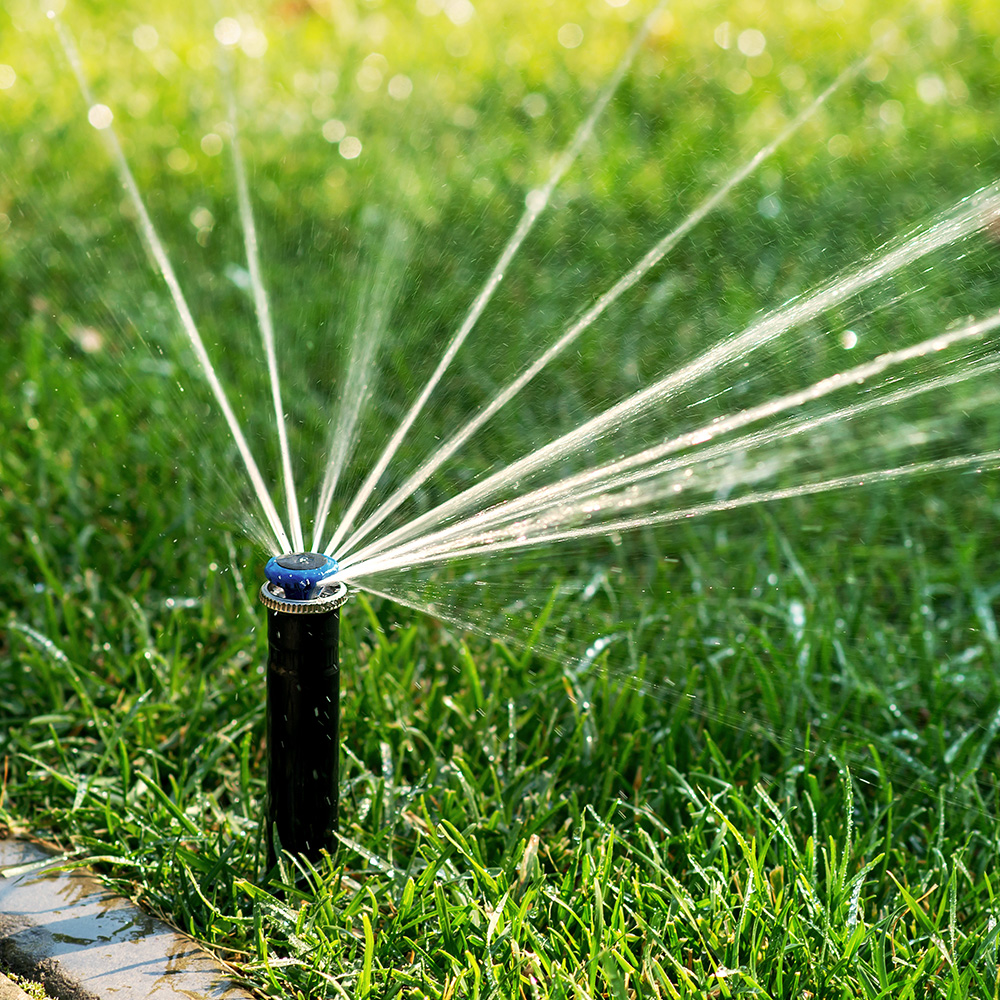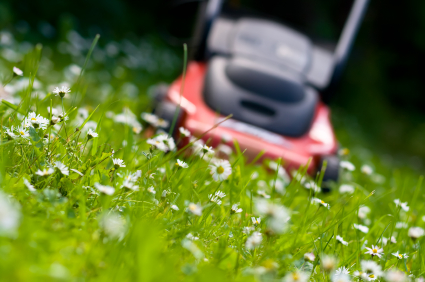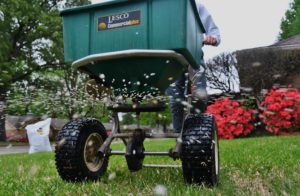Early spring lawn to-do list a little different this year
Prepare, plan now to make your lawn the best it can be
Lawns around the state may need homeowners to do a little more in some respects and a little less in others to help turfgrass recover from the recent historic freeze, according to a Texas A&M AgriLife Extension Service expert.
Becky Bowling, Ph.D., AgriLife Extension urban water specialist, Dallas, said the 2021 growing season might not be a typical one for many Texas lawns because of the recent arctic front. Stress from the hard freeze could leave grasses more vulnerable, so homeowners should be mindful that they do not exacerbate potential problems.
Bowling put together a spring to-do list for homeowners looking for their lawns to emerge and grow to their best potential this summer.
Avoid overwatering lawns
One of the first spring preparations for homeowners should be conducting an irrigation audit to ensure the system is working correctly and efficiently, Bowling said. Checking for leaks, broken lines and other problems should be an emphasis every spring, but the recent weeklong arctic blast and subfreezing temperatures make a system checkup a top priority.
Bowling said homeowners can perform the system audit, but some problems, especially freeze damage might not be obvious. She recommended that residents reach out to their water district, city or county to inquire about possible irrigation system audits they provide that are free or discounted.
Professionals hired should be licensed by the Texas Commission on Environmental Quality, she said.
“You really want to take a look at your system ahead of time because you don’t want to be in a situation where you really need it to run, and it’s not able to deliver water to your turfgrass,” Bowling said. “It’s good to explore your options now to see what resources are available in your area and have it in tip-top shape by the time summer sets in.”

Bowling said measuring the precipitation rate output should be part of the overall system audit. Established lawns typically need half an inch to 1 inch of water per week in the absence of rainfall and measuring the system’s watering rate with a catch-can will determine any needed adjustments.
“Hotter, drier, windier conditions may mean that more water is needed, but half an inch to 1 inch per week is a pretty good standard,” she said. “The key is to not overwater. Overwatering is the No. 1 underlying problem I see in lawns. Systems are programmed to water too shallowly and/or too frequently, leading to underdeveloped roots, which can lead to a wide range of problems. Deep and infrequent waterings help create deeper, more resilient root systems, and that reduces many lawn issues across the board.”
Bowling said a good resource for homeowners is the TexasET Network by AgriLife Extension, which provides good weather information, including rainfall forecasts, that can help irrigation planning. AgriLife Extension’s WaterMyYard application for computer and mobile devices is available in many urban and suburban areas around the state. The app can provide site-specific watering recommendations for homeowners.
Prepare soil for growth
Soil that is prepared to support robust turfgrass health and growth is another priority homeowners should put at the top of their spring to-do list, Bowling said.
Soil preparation begins with a soil test. Bowling recommends soil testing at least every three years but said testing every season will help homeowners stay on top of their soil’s needs.
Bowling said nitrogen is a familiar addition via fertilizer, but a soil test will determine whether applications need to include phosphorous or potassium or an amendment like lime to reduce soil acidity.
“We’re out of the coldest part of the year, so it is a good time to test your soil,” she said. “It takes two to three weeks to get the results back, so getting that done now and having a plan about fertilization or other soil amendments that need to be added throughout the season is a critical part of successful turfgrass care and management.”
Get lawn equipment ready to go
No preseason lawncare to-do list is complete without considering the lawn equipment you use throughout the season. Mower blades need to be cleaned, sharpened and maintained. Spray applicators should be calibrated, and other lawncare tools should be cleaned and ready to use.
“You want your equipment to be clean and operating properly,” she said. “Dirty equipment can move pests around and dull mower blades shred grass rather than cut it, which can lead to diseases.”
Bowling recommends removing debris on the mower and cleaning under its deck by removing debris that cakes to the bottom. Compressed air is a good tool for cleaning off mowing equipment. Also, check the spark plugs, oil and apply grease to the various fittings for moving parts on the machine.
“It’s just a good practice to have your equipment ready to do the job when it’s needed,” she said. “It not only prolongs the equipment’s life but is a part of maintaining a healthy lawn.”
Postpone preemergent
Bowling said annual preemergent applications, a staple for most spring lawn care regimens, might need to be postponed until turfgrasses show they are rebounding from the recent arctic blast.
“We want to proceed with caution this year,” she said. “It’s important to remember that preemergent herbicides are intended for healthy, established turfgrasses. Many of the products available to homeowners can inhibit root growth and may hinder or slow turfgrass recovery if winter injury has occurred.”
Instead, Bowling recommends bagging and removing clippings that may include flowering weeds and/or removing weeds manually or spot spraying weeds directly with post-emergent.
“I just want everyone to be aware this is an unusual year and I don’t recommend a blanket application to a lawn that appears to be under stress,” she said. “Homeowners should also be mindful about applications to areas that need to be resodded or seeded because those herbicides may interfere with turfgrass establishment. Always read and follow herbicide labels as it relates to application timing for the best results.”
Don’t love your lawn to death
Along similar lines as holding off on herbicides, Bowling recommends that homeowners not be so hasty in fertilizer and water applications.
Bowling said the first rule in fertilizing turfgrass is to wait until after it has been mowed twice. Waterings should only begin when the turfgrass needs additional moisture – often beginning in June for many parts of the state.
Premature fertilization can benefit competition like weeds rather than turfgrasses, Bowling said.
Fertilizers shouldn’t be applied until daytime temperatures reach 80-95 degrees consistently. By then, soil temperatures are up enough to promote active growth, and plants will do well with some additional nutrients.
Additionally, watering lawns too soon prevents them from establishing a strong root system, which helps them fight off disease and supports them through hot, dry summer months to come.
“This happens every year, but it’s especially important this year,” she said. “A lot of people have the intention of helping their lawn with water and fertilizer, but they’re really hurting it. We want grasses to be up and growing before we fertilize, and root systems become robust when they are becoming active and forced to grow to seek out moisture.”
Suspect a problem? Ask an AgriLife Extension agent
Bowling said it’s important to monitor turfgrass for potential problems this time of year, both because of the recent winter weather and because spring can be a common time for certain pests to appear. Correctly identifying the problem is key to identifying the best course of action.
“I would recommend connecting with AgriLife Extension ag agents or horticulture agents in your area to help you properly identify any problems and provide the best practices and management plan for the year,” she said.
“I just want to reemphasize that the freeze damage may be slow to appear, and we may mistake it for other things. We never want to treat a problem without proper diagnosis, particularly when our temptation is to reach for the nearest pesticide. So, start preparing now by checking off this to-do list, and stay connected to your local AgriLife Extension experts as we move into the season to make sure you are always getting the best advice on how to move forward.”




